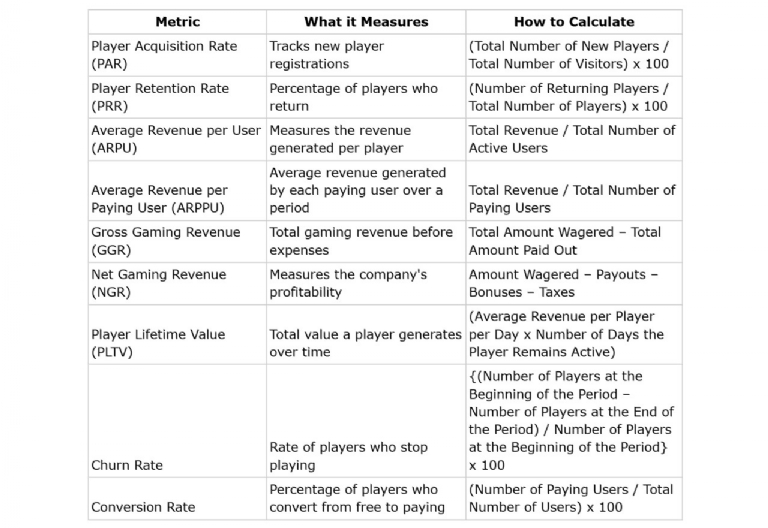

What are iGaming metrics?
iGaming metrics are data that reveal player behavior and help improve campaigns. With the global iGaming market valued at approximately US$100 billion, competition is intense. That's why monitoring indicators such as player retention, churn and conversions is essential to creating an experience that keeps players engaged.
Indicator categories in iGaming
Every player interaction generates valuable information about the platform's performance. Below are the main categories of iGaming metrics:
1. Revenue Indicators: Data such as Gross Gaming Revenue (GGR) and Average Revenue Per User (ARPU) demonstrate turnover and profits. A 10-15% growth in annual GGR and keeping promotional costs below 20% of GGR are reasonable targets to ensure success.
2. Player Indicators: Metrics such as player retention, churn rate and Player Lifetime Value (PLTV) are key to understanding user behavior. Ideal retention is between 70-80% after 30 days, and PLTV should be 3-4 times the cost of acquiring new players.
3. Marketing indicators: The effectiveness of campaigns is measured by indicators such as conversion rate (ideally between 10-20%) and Customer Acquisition Cost (CAC). A lower CAC indicates an efficient marketing strategy.
4. Operational Indicators: These figures ensure that the platform is running smoothly. Players expect an uptime of 99.9% and withdrawals processed within 24 hours. Efficient customer support is also essential for a good experience.
10 crucial indicators for iGaming affiliates and brands
Here are the key iGaming metrics that need to be tracked to ensure success in the sector:
1. Player Acquisition Rate (PAR): Measures the number of new users who sign up.
2. Player Retention Rate (PRR): Tracks the number of users who remain active over time.
3. Average Revenue Per User (ARPU): Indicates the revenue generated on average by all users.
4. Average Revenue Per Paying User (ARPPU): Shows how much is generated by players who spend money on the platform.
5. Gross Gaming Revenue (GGR): Represents the total generated by players' bets.
6. Net Gaming Revenue (NGR): Calculates profitability after deductions for bonuses, taxes and payments.
7. Lifetime Player Value (LTV): Indicates the total value generated by a player over time.
8. Churn Rate: Measures the percentage of players who leave the platform.
9. Conversion Rate: Calculates the percentage of visitors who become paying players.
10 Customer Acquisition Cost (CAC): Shows the amount spent to acquire new players.
How to calculate each iGaming metric
Here are the basic formulas for calculating these metrics:

Conclusion
iGaming metrics are essential for evaluating the success of campaigns and identifying opportunities for improvement. Tracking these figures helps ensure an engaged and loyal player base, as well as optimizing strategies to increase revenue. Tools such as PropellerAds can be useful for maximizing the results of marketing campaigns.
Frequently Asked Questions (FAQs)
What is the difference between ARPU and ARPPU? ARPU measures the average revenue of all users, while ARPPU focuses only on paying users, showing how much active players spend in a period.
How is NGR calculated? Net Gaming Revenue (NGR) is obtained by subtracting payouts, bonuses and taxes from the total wagered, revealing profitability before operating costs.
Why is the CAC relevant? CAC measures the cost of acquiring a new player. When the CAC is lower, it indicates more efficient marketing campaigns and a higher return on investment.
What is a good PRR? A PRR of between 70-80% after 30 days is excellent, indicating strong player loyalty and satisfaction, crucial aspects for long-term success.
Join PropellerAds Now